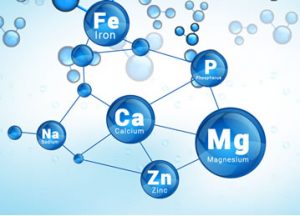Sustainable Disposal of Caustic Wastewater (NaOH)

The Definitive Guide to Safe and Sustainable Disposal of
Caustic Chemical Wastewater (NaOH)
Caustic soda (Sodium Hydroxide, NaOH) is indispensable in manufacturing—from petrochemical refining and textiles to food processing. Yet, its use produces highly alkaline caustic wastewater, one of the most challenging industrial effluents to manage. With a typical pH above 12, this waste stream is corrosive, hazardous, and environmentally damaging if not properly neutralized.
This guide explains why safe and sustainable disposal of caustic wastewater is critical, explores proven neutralization technologies—especially the environmentally superior
CO₂ neutralization process—and outlines best practices for compliance, safety, and operational efficiency.
Section 1: Why Proper Caustic Waste Treatment Is Critical
Discharging untreated alkaline wastewater violates
environmental protection standards for wastewater discharge
and poses serious safety and infrastructure risks.
Understanding the Chemical and Environmental Hazards
- Corrosivity: Sodium hydroxide aggressively attacks metals, concrete, and organic materials. Unneutralized discharge corrodes sewer systems and equipment, causing costly downtime.
- Aquatic Toxicity: High-pH effluent is lethal to aquatic life. Most regulations require a
neutral discharge range (pH 6.0–9.0) before release into public systems, as defined by
EPA industrial effluent guidelines. - Worker Safety: Concentrated caustic waste poses serious handling risks, demanding reliable, automated, and enclosed neutralization systems.
Regulatory Compliance: The Non-Negotiable Standard
Environmental agencies globally enforce strict limits on effluent pH and total dissolved solids (TDS). For example, the
EU Industrial Emissions Directive (IED)
and the
ISO 14046 Water Footprint standard
mandate responsible water discharge. Non-compliance can result in heavy fines, production halts, and reputational harm. The cornerstone of compliance is a verifiable, automated caustic neutralization system.
Section 2: Core Methods for NaOH Neutralization and Disposal
Neutralization—the controlled adjustment of wastewater pH to a safe range—is the foundation of caustic disposal. Two primary methods dominate: strong acid dosing and carbon dioxide neutralization.
Method 1: Traditional Strong Acid Dosing (HCl or H₂SO₄)
This conventional method introduces mineral acids such as hydrochloric acid (HCl) or sulfuric acid (H₂SO₄) to neutralize NaOH:
- NaOH + HCl → NaCl + H₂O
- 2NaOH + H₂SO₄ → Na₂SO₄ + 2H₂O
Challenges of Strong Acids
- Exothermic Reaction: The neutralization reaction generates significant heat, requiring cooling systems and robust containment.
- Safety Hazards: Handling strong acids increases operator risk and necessitates complex safety infrastructure. For best practices, consult the
Sodium Hydroxide Safety Data Sheet (SDS). - High Salt Load: The resulting brine elevates TDS, complicating discharge or reuse.
Method 2: The Future of Sustainable Neutralization — CO₂ Systems
The use of
carbon dioxide (CO₂) neutralization systems
has emerged as a safer, greener, and more controllable technology. CO₂ dissolves in water to form carbonic acid (H₂CO₃), which reacts with NaOH:
- CO₂ + H₂O ⇌ H₂CO₃ (Carbonic Acid Formation)
- 2NaOH + H₂CO₃ → Na₂CO₃ + 2H₂O (Sodium Carbonate and Water)
Advantages of CO₂ Neutralization
| Feature | CO₂ Neutralization | Strong Acid Neutralization |
|---|---|---|
| Safety | Non-corrosive and non-hazardous; greatly reduces worker risk. | Highly corrosive; requires specialized storage and PPE. |
| Reaction Control | Self-buffering, mild reaction; no risk of over-acidification. | Highly exothermic; easy to overshoot target pH. |
| Environmental Impact | Minimal TDS generation; supports water reuse and circular economy goals. | Increases salinity, often requiring post-treatment. |
Section 3: Automation and Smart Compliance Monitoring
Modern caustic waste treatment systems integrate automation for accuracy, safety, and documentation.
Automated pH Control Systems
- Real-Time Feedback: Advanced systems use pH sensors and PLC automation to maintain stable neutralization.
- Dynamic Flow Adjustment: Intelligent control adjusts reagent dosing in response to variable flow and concentration.
- Data-Driven Compliance: Continuous logging ensures traceable compliance reports for environmental audits.
Designing the Right Disposal System
Each industry requires tailored engineering solutions. For guidance, review
industrial wastewater treatment design basics.
System selection depends on waste volume, NaOH concentration, available space, and regional regulations. The best systems optimize for:
- Safety: Using non-hazardous CO₂ neutralization technology.
- Efficiency: Reducing reagent and energy consumption.
- Compliance: Consistently achieving pH 6.0–9.0 and minimal TDS.
Conclusion: Turning Compliance into Competitive Advantage
Responsible caustic wastewater disposal is more than a regulatory requirement—it’s an opportunity to enhance sustainability, protect workers, and lower operating costs. Transitioning from strong acids to CO₂-based neutralization unlocks safer operations, consistent compliance, and a smaller environmental footprint aligned with
UN Sustainable Development Goal 6: Clean Water and Sanitation.
Ready to modernize your caustic wastewater treatment?
Partner with our environmental engineers to design a custom CO₂ neutralization system that ensures compliance, efficiency, and sustainability.
Contact us today for a free consultation.

